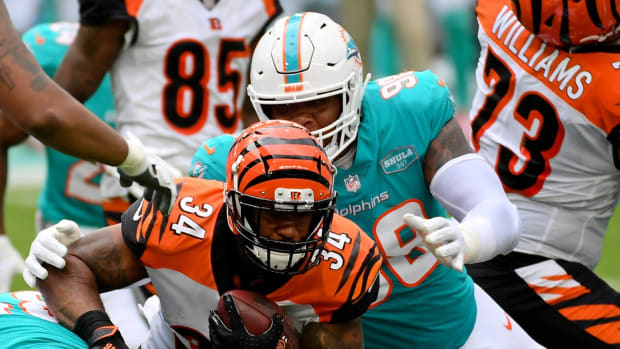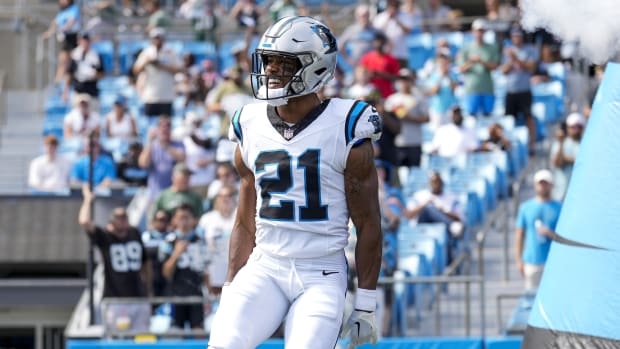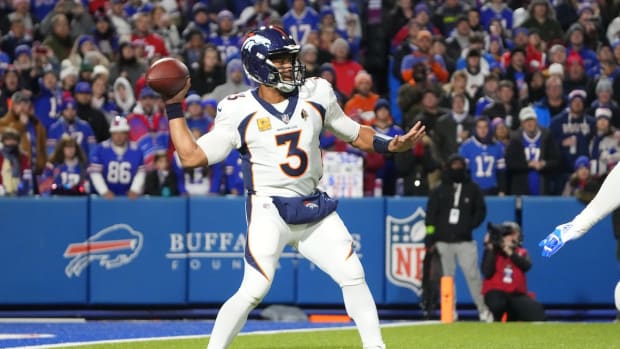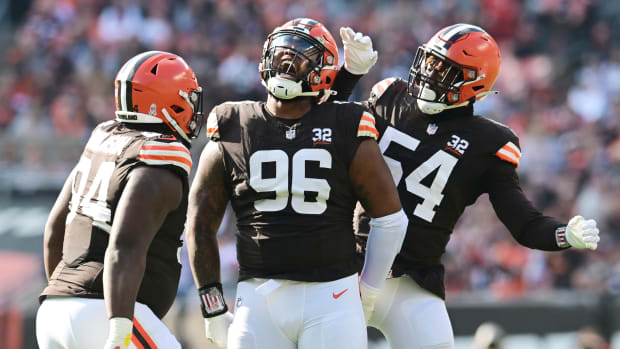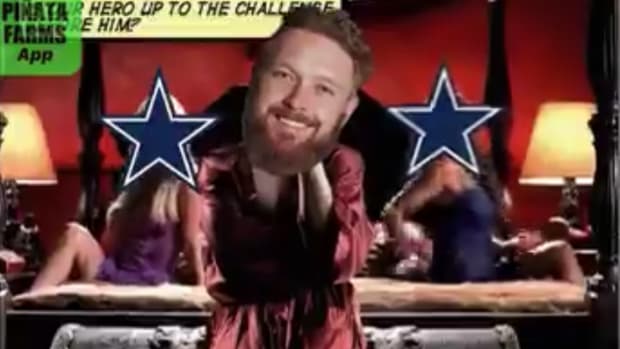Oakland Raiders: 10 Things You Need to Know
1. Raiders fans, don’t get apoplectic, but Derek Carr is not the Lord and Savior of the NFL. He’s just an extremely talented young quarterback who can run a wide-ranging offense and flick strong, tight-window throws anywhere on the field. MVP-caliber stuff? You bet. But understand: Carr did not play like an MVP last year until after the start of the Bucs game in Week 8. Prior to that, he was inconsistent in his mechanics and decision-making. (These are vital quarterbacking characteristics that can almost never be captured by statistics. There’s no way to quantify balls that are thrown late or not at all.) Raiders fans, this should delight, not offend, you. It suggests that the young franchise quarterback is in the early stages of his growth, and therefore he could be in store for an even better season in 2017.
2. Offensive coordinator Bill Musgrave did a great job during his two years here, but the belief in Oakland is that Carr will have a better rapport with 37-year-old first-time coordinator Todd Downing, who served as Carr’s QB coach (and prior to that, Matthew Stafford’s QB coach). Expect Downing to make the system a little more pliable. He may also expand Oakland’s hurry-up concepts.
3. What Downing wanted most heading into this offseason was to acquire a threatening tight end (incumbent Clive Walford is more of a No. 2.) He got one: ex-Packer Jared Cook, who can line up anywhere and challenge defenses inside on vertical routes.
4. The Raiders have a stellar offensive line, but you can’t call it the best in football for two reasons: (1) Dallas’s is far and away better. It’s the best O-line since the Great Wall of Dallas in the early 90s; and (2) The Raiders hide their offensive tackles. Donald Penn is good, not great. On the right side, Marshall Newhouse is below average. Both tackles get camouflaged because this team uses six-offensive line sets more than any team in the league, which creates more double-teams on the edges. (Now that plus-sized tight end Lee Smith is healthy, he may assume the role that sixth O-linemen Denver Kirkland and Vadal Alexander have shared.) When the Raiders don’t have extra bodies in pass protection, they almost always spread out and have Carr throw quickly, before the pass rush can factor (thus, the impressive sacks-allowed statistics). The argument is whether the Raiders have the best interior offensive line in football. It’s certainly a powerful one. Guards Gabe Jackson and especially Kelechi Osemele can displace people in the ground game. Center Rodney Hudson is alert and technically sound blocking on the move. In pass protection, the guards are steadily improving works in progress (they have a chance to be sensational) and Hudson is trusted to get everyone on the same page.
5. Let’s remember: Marshawn Lynch hasn’t been a star running back since 2014. It’ll be interesting to see how he does in Oakland. The Raiders have two excellent backups in DeAndre Washington and Jalen Richard. Most likely, Lynch will lead the rotation as a first- and second-down back.
6. Believe it or not, no defense finished with fewer sacks than the Raiders last season. That’s despite superstar Khalil Mack earning NFL Defensive Player of the Year honors on the strength of, among other things, his destructive pass rushing. Mack had 11 sacks. Athletic bookend Bruce Irvin had seven (despite certain passing scenarios in which he spied the quarterback). The entire rest of the defense had seven. The Raiders have decent interior pass rushing talent in Denico Autry, Jihad Ward and Mario Edwards (who missed 14 games in ’16). And overall, Oakland’s pass rush was noisier than 25 sacks suggest. Still, this front four needs to generate more big plays in 2017.
The Raiders Are Not Getting Ahead of Themselves
7. Oakland has perhaps the least appealing linebacking situation in the NFL, which means we’ll see this defense continue to be more diverse and aggressive schematically, like what Jack Del Rio did as the D coordinator in Denver (2012-14). Coordinator Ken Norton Jr. would, presumably, prefer the straightforward zone tactics that he learned to coach as an assistant in Seattle. But straight zone defense is inherently reactionary. Oakland’s linebackers would get exposed playing purely read-and-react football.
8. The Raiders probably had a meeting about this very thing and decided to go all-in on a diverse, aggressive scheme. Instead of significantly addressing their linebacker situation over the offseason, they drafted cornerback Gareon Conley in the first round and safety Obi Melifonwu in the second. The better your defensive backfield, the more creative your scheme can be.
9. Last year’s first-round pick was also spent on a defensive back, safety Karl Joseph; he will be interesting to watch in Year Two. Joseph has a feel for matching up to tight ends, and there’s a playmaking dynamic in his approach to the game. He’s only 5' 10", 205 pounds, though, which can be a problem when he’s down in the box. To hide this, and to allow Joseph to rely more on his instincts in space, the Raiders will call more two-high safety coverages than they normally would. That would lead to Joseph attacking run plays with downhill momentum.
10. When Reggie Nelson’s time in Oakland ends, we’ll likely see Joseph play free safety. Melifonwu (6' 3", 247) is built more to play in the box. In the more immediate future, Melifonwu can play linebacker in the dime sub-package. The Raiders didn’t use that package much last season—Del Rio and Norton prefer nickel—but given the depth at defensive back and questions at linebacker, that should change.
• Question or comment? Email us at talkback@themmqb.com.

































